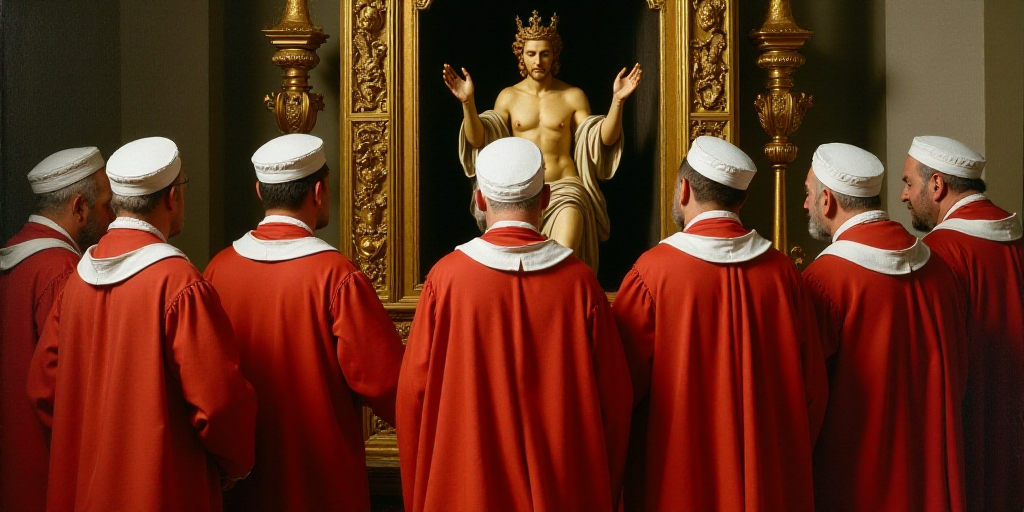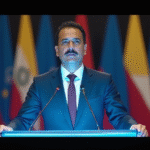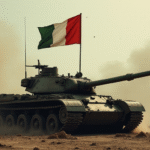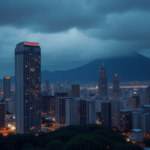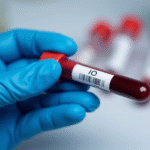Introduction to the Papal Conclave
On this Wednesday, 133 Catholic cardinals embarked on the crucial task of selecting a new pope, isolating themselves from the world until they choose a leader they hope will unite a global and diverse yet divided Church. This ancient ritual, dating back to medieval times, sees the cardinals slowly walking towards the Sistine Chapel before swearing an everlasting oath of secrecy under the watchful gaze of Michelangelo’s Judgment Day fresco.
The Conclave Process
Arzobispo Diego Ravelli, the master of ceremonies at the Vatican, declared in Latin “Extra omnes!” (All out!), signaling those not participating in the conclave to leave. The chapel doors slammed shut, allowing the cardinals to conduct their first vote in search of Pope Francis’ successor, who passed away last month.
Historically, no pope has been elected on the first day of a conclave for centuries. Thus, voting may extend over several days before one of the cardinals with the red biretta of the Church garners the required two-thirds majority to become the 267th pontiff.
On this first day, there will only be one vote. Starting then, the cardinals can cast up to four votes daily.
Preparations and Prayers
During a formal procession to the Sistine Chapel, cardinals requested prayers from nearly 100 believed-to-be celestial beings as they prepared for what might be one of the most significant decisions in their lives.
The only anticipated sign from the cardinals during the conclave is smoke emanating from a chimney atop the chapel, as they burn their ballots. Black smoke signals an inconclusive vote, while white smoke accompanied by bell tolls announces the election of a new leader for the 1.4-billion-member Church.
“Vigilance and Unity”
The pope’s influence extends far beyond the Catholic Church, providing a moral voice and call to conscience unmatched by any world leader.
In a mass held at St. Peter’s Basilica before entering the conclave, cardinals prayed for a pope who would exercise “vigilance” over the world. Cardinal Giovanni Battista Re, an Italian and the dean of the College of Cardinals, urged his colleagues to disregard personal considerations when choosing the new pontiff, focusing solely on “the welfare of the Church and humanity.”
Re, at 91 years old, will not participate in the conclave, reserved for cardinals under 80.
Diverse Views Among Cardinals
In recent days, cardinals have expressed varying opinions on what they seek in the next pope. Some advocate for continuity with Pope Francis’ vision of openness and reform, while others wish to reverse course and embrace traditional practices. Many desire a more predictable and measured papacy.
A record-breaking 133 cardinals from 70 countries will enter the Sistine Chapel, compared to 115 from 48 nations in the 2013 conclave, reflecting Pope Francis’ efforts to expand the Church’s reach to remote regions with few Catholics.
No clear frontrunner has emerged, though Italian cardinal Pietro Parolin and Filipino Luis Antonio Tagle are considered potential candidates.
Secrecy and Technology
Cardinals cannot communicate with anyone outside during the conclave, and the Vatican has implemented high-tech measures to ensure secrecy, including devices to prevent eavesdropping.
The average duration of the last ten conclaves was just over three days, with none exceeding five days. The 2013 conclave lasted only two days.
This time, cardinals aim to conclude the matter swiftly to avoid appearing divided or leading the Church astray.
Approximately 80% of the cardinals entering the Sistine Chapel on Wednesday were appointed by Francis, increasing the likelihood that his successor will continue some of his progressive policies despite strong opposition from traditionalists.
Among their considerations is whether to choose a pope from the rapidly growing southern global congregations, as they did with Argentine Francis in 2013, or return leadership to Europe or even elect the first American pope.
Key Questions and Answers
- What is a papal conclave? A papal conclave is an ancient process where Catholic cardinals gather in seclusion to elect a new pope.
- How many cardinals participate in the 2025 conclave? 133 cardinals from 70 countries are participating in the conclave.
- What is the significance of the smoke signals from the Sistine Chapel? Black smoke indicates an inconclusive vote, while white smoke accompanied by bell tolls announces the election of a new pope.
- What factors are cardinals considering in selecting the next pope? Cardinals seek a pope who will exercise vigilance over the world, maintain unity amidst diversity, and possibly continue Pope Francis’ progressive policies.
- How long does a typical conclave last? The average duration of the last ten conclaves was about three days, with none exceeding five days.

